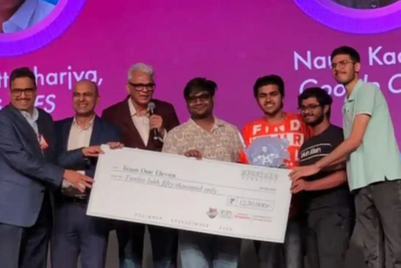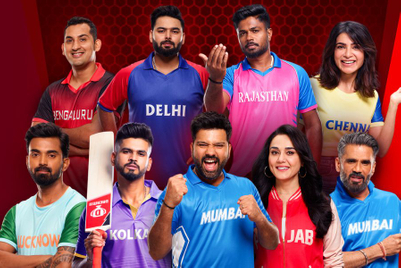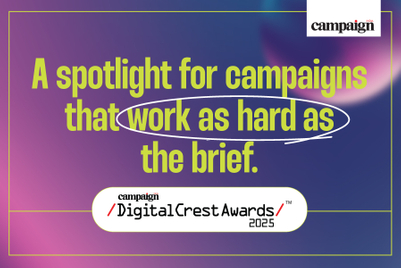.jpg&h=570&w=855&q=100&v=20250320&c=1)
Dream11, the fantasy sports platform with more than 250 million registered users, is making a significant shift. The company has transitioned from a real-money gaming product to a free-to-play model backed by advertising and sponsorships.
The move comes as India’s regulatory environment for online gaming undergoes sweeping changes, reshaping how platforms operate and how brands approach sports audiences. Starting 1 October 2025, the Promotion and Regulation of Online Gaming Act will ban all forms of real-money play, while explicitly supporting e-sports and other non-monetised formats.
At stake is whether fantasy platforms can keep users engaged without financial stakes—and whether advertisers can convert that engagement into measurable returns.
An ad-supported model for scale
Under the new structure, millions of users can enter daily contests for free, competing for prizes and brand-backed rewards. Nearly 70% of Dream11’s community is between 18 and 35, with another 25% aged 35–60, a mix that combines youth-driven passion with consumer spending power.
Vikrant Mudaliar, chief marketing officer of Dream Sports, Dream11’s parent company, said, “Over the years, many brands have shown strong interest in partnering with Dream11, and now, after our pivot to free-to-play fantasy sports, we have begun onboarding them selectively. Our new model ensures that every cricket fan can join the action completely for free, test their strategy, compete with millions of other sports fans, and win cash prizes and exciting brand-backed rewards.”
Dream11 reports more than 10 million daily active users, positioning itself as a frequent touchpoint for cricket followers. Unlike passive advertising, the company says its integrations place brands inside the contest experience, making interactions active, memorable and measurable.
Swiggy, Astrotalk and Tata Neu are among the early advertisers testing the format. Campaigns can be tailored by cohort—families in smaller towns, young metro-based fans or older professionals—depending on brand objectives.
Beyond banners: Embedding brands in play
Mudaliar argued that Dream11 is not relying solely on contests. He pointed to the company’s broader sports portfolio. “India’s passion for fantasy cricket continues to drive remarkable engagement, and product integrations like live cricket streaming within Dream11 via our portfolio platform, FanCode, mean that sports fans will always find fresh and engaging content,” he said. “This journey of reimagining fantasy sports makes the experience more inclusive, competitive, and passion-driven, while giving advertisers quality reach, measurable engagement, and access to a very rich audience of millions of historically transacting users.”
For advertisers, the experiment is whether embedding campaigns inside fantasy play produces stronger outcomes than traditional media. The test will be whether the reach and frequency Dream11 offers translates into actual brand lift at scale.
The sponsorship fallout
Dream11’s pivot coincides with its exit as Team India’s lead jersey sponsor. The Board of Control for Cricket in India (BCCI) has since brought in Apollo Tyres, marking the tyre company’s first foray into cricket sponsorship.
The timing highlighted the sponsorship ripple effect. During the Asia Cup 2025, the Indian team played without a jersey sponsor, an unusual sight in modern cricket. The absence underlined how regulatory uncertainty can upend lucrative commercial deals in one of the world’s most competitive sponsorship markets.
Apollo’s entry shows that while the appeal of cricket remains undiminished, the type of sponsor is shifting—from digital-first platforms exposed to regulation, to consumer brands with fewer compliance risks.
The Promotion and Regulation of Online Gaming Bill, passed by Parliament in August and signed into law soon after, represents the most comprehensive attempt yet to govern the sector.
Information Technology Minister Ashwini Vaishnaw confirmed its timeline at a pre-event conference for the AI Impact Summit 2026 India: “The rules will be promulgated with effect from October 1.”
The Act bans all money-based games while carving out space for e-sports and social play. Lawmakers say the goal is to curb gambling addiction, money laundering and fraud, even as the sector argues it has been unfairly lumped with betting platforms.
Companies including My11Circle, WinZO, Zupee and PokerBaazi have already suspended real-money contests. For them, as for Dream11, the future hinges on whether non-monetised play can keep audiences engaged at comparable levels.
From disruption to reinvention
Dream11’s parent, Dream Sports, is presenting the shift as reinvention rather than retreat. Its portfolio includes FanCode, the digital sports streaming service; DreamSetGo, a premium sports travel venture; and Dream Cricket, a mobile sports game. The company also runs the Dream Sports Foundation, which funds grassroots talent development.
The strategy is to keep cricket at the centre of engagement while layering new, ad-supported formats around it. The wager is that cricket’s unrivalled cultural position in India, combined with prize-led gamification, will keep users active even without the monetary stakes that once drove the platform.
For advertisers, the calculation is more pragmatic. The platform offers reach into a passionate, engaged community. But brand managers will be looking for tangible proof—conversion, recall, or purchase intent—that justifies shifting budgets from other digital media channels.
The uncertain road ahead
What is clear is that India’s new gaming law has forced companies to rethink their operating models. The free-to-play pivot signals a broader trend: experimentation with ad-backed engagement, partnerships rooted in fandom, and attempts to diversify revenue streams beyond wagering.
For Dream11, the challenge is twofold. First, to sustain daily engagement without the lure of real-money rewards. Second, to convince advertisers that fantasy cricket can be as effective a medium as mainstream digital platforms.
The exit from Indian cricket’s most visible sponsorship underscores the stakes. At the same time, the company’s sheer scale ensures it will remain a significant player in the evolving sports-marketing mix.
As the regulatory reset takes hold, Dream11 and its rivals face a new test: whether they can reinvent fantasy sports as a sustainable, brand-backed ecosystem—or whether user interest will migrate elsewhere.


.jpg&h=334&w=500&q=100&v=20250320&c=1)

.jpg&h=334&w=500&q=100&v=20250320&c=1)
.jpg&h=334&w=500&q=100&v=20250320&c=1)
.jpg&h=334&w=500&q=100&v=20250320&c=1)
.jpg&h=334&w=500&q=100&v=20250320&c=1)

.jpg&h=334&w=500&q=100&v=20250320&c=1)



.jpg&h=268&w=401&q=100&v=20250320&c=1)



.jpg&h=268&w=401&q=100&v=20250320&c=1)
.jpg&h=268&w=401&q=100&v=20250320&c=1)
.jpg&h=268&w=401&q=100&v=20250320&c=1)
